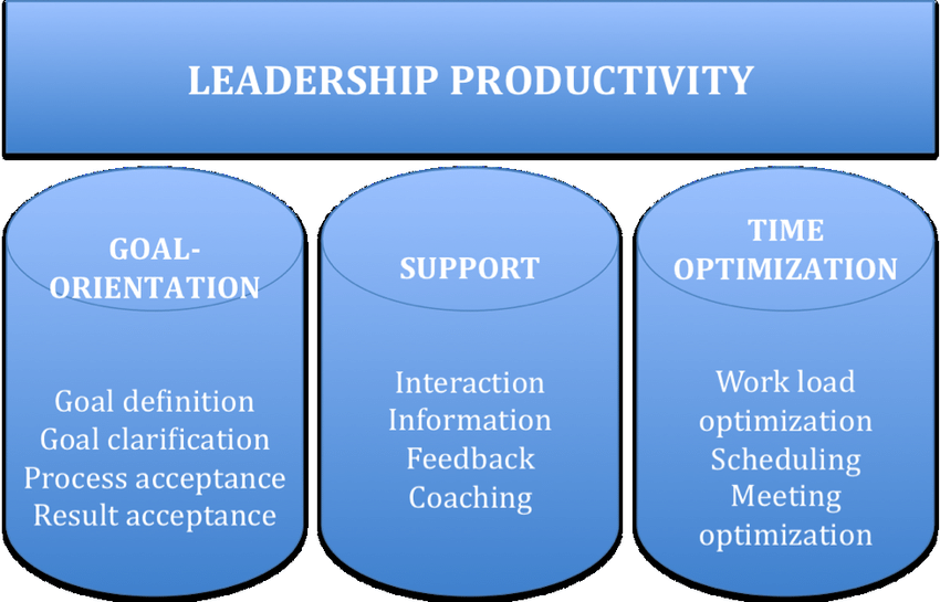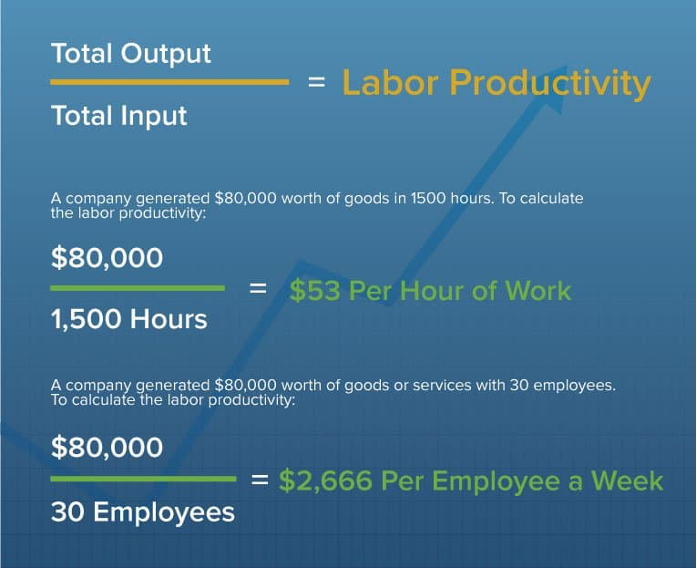Team Productivity FAQ
Team productivity is in the spotlight as more people are now working remotely in distributed teams. Still, firms expect as much, if not more, output regardless of work location.
But how can team leaders increase productivity? And how can a team improve its performance?
In this team productivity FAQ, the Loomly Team answers all your questions.
Table of Contents
- What does team productivity mean?
- How do you define employee productivity?
- Why is productivity important?
- What constitutes a productive team?
- What is productive leadership?
- How can a leader increase productivity?
- How can a team leader be productive?
- How do you influence productivity?
- What are the five roles of an effective team?
- What makes a team dysfunctional?
- What is dysfunctional leadership?
- How can a team improve performance?
- How can a team promote productivity?
- How do you show productivity at work?
- What are the five elements of successful teamwork?
- How do you measure team productivity?
- What are the best team productivity tools?
What does team productivity mean?
Team productivity is a measure of activities performed for quality output in a specific amount of time. It also involves raising the satisfaction of team members and providing the necessary tools to perform the tasks with complete efficiency.
How do you define employee productivity?
According to Zistermo, employee productivity is a metric based on the amount of output on a project versus the amount of time it takes. You can also measure it against a standard or “base” of productivity for a group of workers doing similar work.
Why is productivity important?
Productivity is a measure of how efficiently a process runs and how effectively it uses resources. Increased productivity can lead to greater profits for businesses and higher income for individuals.
For businesses, productivity growth is important because providing more goods and services to consumers translates to higher profits.
What constitutes a productive team?
Blogin lists seven habits of a highly productive team:
- Open communication – An open dialog means the team can freely express and share ideas, proposals, suggestions of improvements, concerns, and problems.
- Clear responsibilities and joint activities – Everyone in the team should have a particular role with specific responsibilities.
- Setting result-oriented goals – It is one of the best ways to measure their productivity and success.
- Sharing knowledge, accomplishments, and failures – Encourage your team to share their knowledge to help others to complete the job faster. Also, don’t be shy to share team or individual accomplishments.
- Flexibility – Productive teams are flexible and can adjust to a new situation swiftly.
- Have some fun – People are more productive when they are feeling happy.
- Take a rest from the job – People need time away from their work to be more productive.
What is productive leadership?
Christoph Desjardins says productive leadership means a leader is responsible for the work productivity of his team and can change this productivity by his performance.
If a leader performs Goal Orientation, Support, and Time Optimization, then the productivity of employees increases.

Credit: ResearchGate
How can a leader increase productivity?
Deep Patel shared eight proven ways a leader can increase their productivity:
- Set expectations from the start to save time explaining things over and over.
- Invest in organizational tools like a CRM so that you can spend less time digging through random notes and more time on the important work.
- Avoid long meetings. Schedule short, 10 to 15-minute focused sessions to save time.
- Get to know your team so that you can be more effective and empathetic as a manager.
- Set up feedback loops like weekly one-on-ones, so you and your direct report have an opportunity to discuss concerns and feedback and present ideas.
- Compartmentalize your time (when you can’t be disturbed), so you can focus on the work you have to get done.
- Keep information transparent, so when someone has a question, they can find it without bothering you.
- Write everything down so that you don’t have to ask someone to remind you what you should be doing.
How can a team leader be productive?
Liquid Planner shared eight tips to help team leaders establish and maintain a productive, collaborative team:
- Make time to lead.
- Get to know your team.
- Communicate, communicate, communicate.
- Lead by example.
- Reward the good and learn from the bad (and the ugly).
- Delegate.
- Be decisive.
- Enjoy it!
How do you influence productivity?
Three crucial factors influence employee productivity:
1. Employee engagement
According to Frank Mercado, an organization with high employee engagement levels is at least twice as productive as its counterparts with lower employee engagement.
2. Workplace environment
When the environment is negative or tense, engagement and productivity levels decrease significantly, affecting the company as a whole. You can ensure a positive atmosphere by encouraging positive and honest feedback and timely praise.
As Dann Albright puts it: “When ingredients like open communication, a focus on self-care and autonomy, and the basic human needs of trust and respect are baked into a company culture, the result is better employee productivity.”
3. Technology
Technology refers to everything employees have at their disposal to do their jobs.
- Embrace technology to the point where its use becomes as equally important in the workplace as in many other aspects of your employees’ lives.
- Keep up with what’s out there, and make sure to adapt your organization’s targets and general work-life as technology advances and progresses.
- Teach your employees that they can and will have to do their jobs with what is available even if you don’t have the latest and newest technologies.
What are the five roles of an effective team?
The five functions of an effective team are:
1. Trust
Trust is the foundation of a good team. Trust is about being vulnerable and not burying problems.
2. Conflict management
Conflict management is required to enable open and heated discussions that can be resolved amicably.
3. Commitment
Commitment requires employees to believe in their organization and leadership.
4. Accountability
Accountability involves having high standards and taking responsibility, which includes both reprimands and praising. It is not about keeping score.
5. Focusing on results
Focusing on results means there is no individual status or ego. Teams fail and succeed together.
What makes a team dysfunctional?
Five traits make a team dysfunctional:
1. Lack of commitment
A lack of clear direction and commitment can make colleagues, especially star colleagues, disgruntled, and want to remove themselves from the team.
2. Absence of trust
When team members are unwilling to be vulnerable with one another and refuse to admit their mistakes, weaknesses, or needs for help, a foundation of trust is impossible.
3. Avoidance of accountability
The need to avoid relational discomfort prevents teams from holding one another accountable for their behaviors that are counterproductive to the overall good of the team.
4. Fear of conflict
The desire to preserve artificial harmony stifles the occurrence of unfiltered, productive conflict, which results in poor decisions.
5. Inattention to results
The desire for individual credit (ego, career development, and recognition) will erode the focus on collective success. If the team has lost sight of the need for collective achievement, the business ultimately suffers.
What is dysfunctional leadership?
The distinguishing factor between effective and dysfunctional leaders is the mindsets the leaders possess.
Mindsets are the mental lenses that shape how people see and interpret the world around them.
Dysfunctional leaders’ mindsets attune them to mishandling situations and making poor decisions while simultaneously leading them to believe they’ve taken the best course of action.
How can a team improve performance?
According to Salesforce, there are ten ways a leader can improve team performance:
- Delegate responsibility.
- Communicate effectively.
- Know their strengths and weaknesses.
- Give them incentives.
- Eliminate excess.
- Lead by example.
- Hold stand-up meetings.
- Let employees work from home.
- Set realistic goals.
- Integrate technology.
How can a team promote productivity?
Tameday recommends following the ten steps below to make your team more productive:
- Hire the best in the business.
- Place emphasis on training.
- Set clear goals from the get-go.
- Give feedback.
- Reward good work.
- Use the right technology for the best results.
- Encourage everyone to move out of their comfort zone.
- Let your employees take charge of their own work.
- Be yourself when in charge.
- Use Tameday.
How do you show productivity at work?
Here are five ways to increase your productivity at work:
- Stop multitasking.
- Take breaks.
- Set small goals.
- Take care of the biggest tasks when you’re most alert.
- Implement the “two-minute rule”.
As a remote worker, it isn’t always easy to show that you’re productive and invested in your job. Here are four strategies to prove your productivity when working from home:
- Be reliable and responsive.
- Keep updates to a minimum.
- Be present when you get face time.
- Don’t pick up extra tasks just to create visibility.
What are the five elements of successful teamwork?
The five elements of successful teamwork are:
1. Communication
Effective communication is the most important part of teamwork and involves consistently updating each person and never assuming that everyone has the same information. Collaborating and being open to new ideas are also essential ingredients for a harmonious team environment.
2. Delegation
One of the benefits of strong teamwork is that team leaders can identify all aspects of a project and allocate tasks to the most appropriate team member.
3. Efficiency
Strong and cohesive teams develop systems that allow them to collaborate efficiently and complete tasks promptly.
4. Ideas
When a team works well together, colleagues feel more comfortable offering suggestions and ideas, which leads to more productive and collaborative brainstorming sessions.
5. Support
All workplaces provide challenges, but having a healthy team environment can act as a support mechanism for team members.
How do you measure team productivity?
You can measure productivity per individual, team, or even department with a simple labor productivity equation: total output / total input.
For example, if your company generated $80,000 worth of goods or services (output) using 1,500 labor hours (input), you would calculate your company’s labor productivity by dividing 80,000 by 1,500, which means your company generates $53 per hour of work.
You could also look at labor productivity in terms of individual employee contribution. In this case, instead of using hours as the input, you would use the number of employees.
For example, if your company generated $80,000 worth of goods or services in one week with 30 employees, you would divide 80,000 by 30, which means each employee produced $2,666 for your company per week.

Credit: SmartSheet
What are the best team productivity tools?
The best productivity tools for teams are:
- Serene: Cut out distractions, stay focused on the task at hand, and get things done quicker.
- RescueTime: See which apps you’re wasting time on and block access to them.
- Toggl: Time tasks, get things done quicker, track team productivity, and make sure you’re charging enough for the time it takes to complete projects.
- Trello: A simple task management tool that makes it easier to manage projects with remote teams.
- monday: A more advanced task management tool for managing larger teams and more complex projects.
- Process.st: A simple checklist tool for non-tech teams.
- Spark: A distraction-free, collaborative email experience to keep teams focused and help them complete tasks quicker.
- Airtable: Imagine spreadsheet project management on steroids, but with an interface so intuitive anyone can use it.
- Doodle: Team scheduling for meetings, video calls, and joint sessions without the hassle.
- Zapier: Make your favorite apps more robust and automate repetitive tasks to save time.
- Figma: Helps design teams create, test, and ship better designs from start to finish.
- GitHub: The advanced development platform where engineering teams build, ship, and maintain their software.
- Loomly: The Brand Success Platform that empowers marketing teams to grow successful brands online through collaboration, publishing, and advanced analytics.

Manage all your social media accounts in one place.
Craft, schedule, & auto-post content to all your social channels, then track analytics and manage interactions from a single, easy-to-use dashboard.
Team Productivity in a Nutshell
Team productivity is measured by a simple labor productivity equation: total output / total input.
The most productive teams have strong and effective leadership that creates an environment where team members can collaborate to maximize results.
Follow the tips above to lead your team or work with colleagues in an open, honest, and supportive environment.



